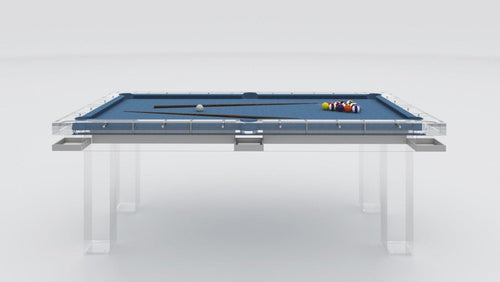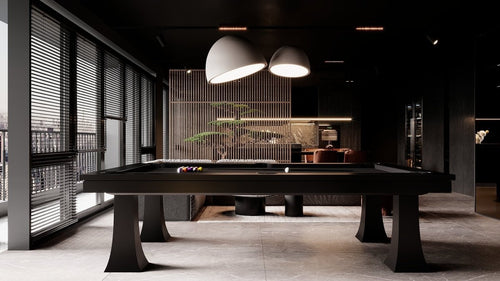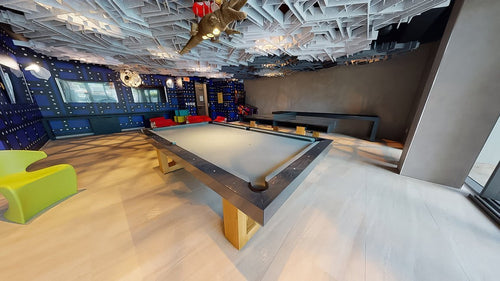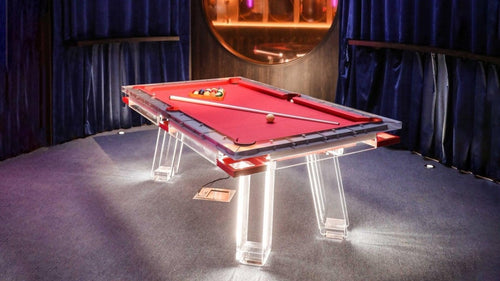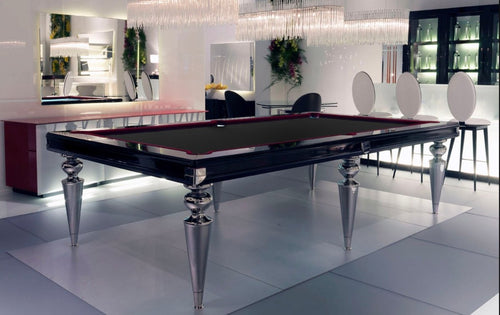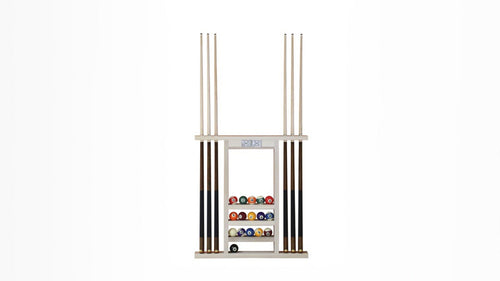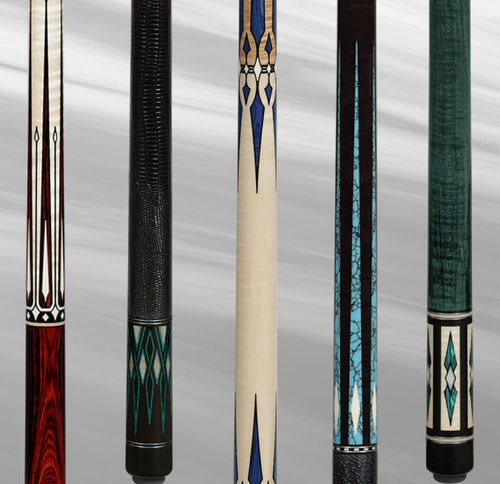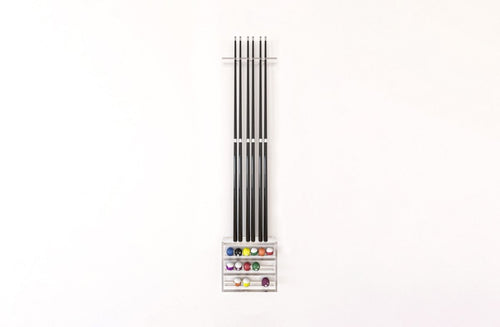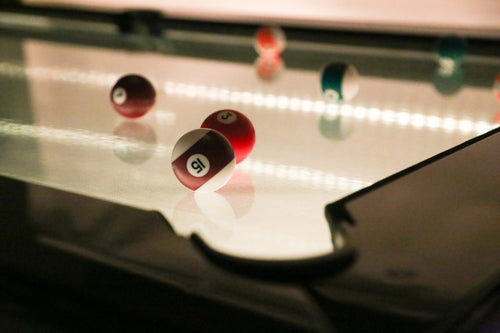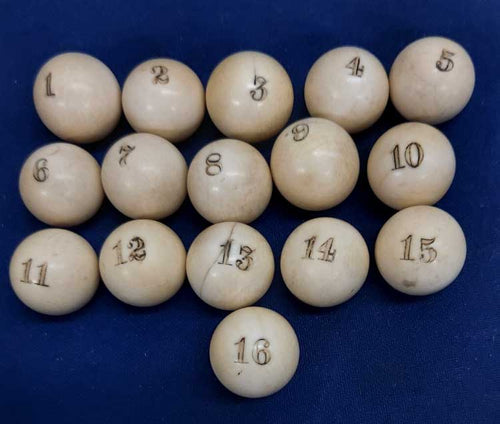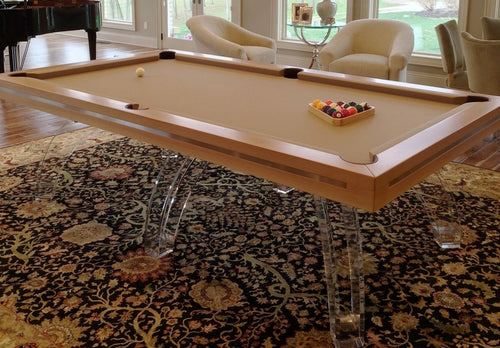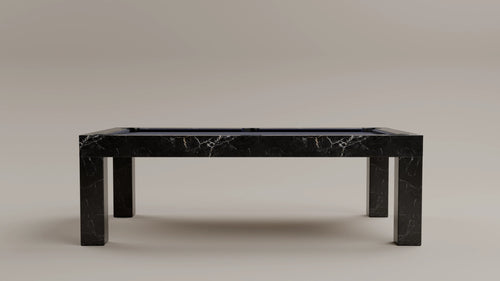Enjoy our modern designs
Why Is It Called Ping Pong?
Anyone who’s played this popular pastime has likely wondered where the playful name “ping pong” comes from. Is it just a quirky nickname for table tennis, or is there something deeper behind the catchy term? Below, we’ll dive into the origins of this name, the history of the game itself, and how “ping pong” evolved from a casual catchphrase to one of the most recognized names in recreational sports.
1. The Onomatopoeic Explanation
The simplest and most common explanation for the name “ping pong” is that it mimics the sounds created when the lightweight ball bounces off the paddle and the table. The “ping” is often associated with the higher-pitched sound as the ball first contacts the paddle, while the “pong” is the slightly lower pitch that occurs when it rebounds on the other side. Early adopters of the game latched onto these lively sounds and turned them into a fun, memorable name.
This onomatopoeic approach to naming is fairly common in various languages, where words like “buzz,” “pop,” or “click” directly represent the sounds made by the objects or actions in question. In this sense, “ping pong” is less of a formal label and more of an organic expression of what players hear and feel during gameplay.
2. Early Roots of Table Tennis
To understand why the name “ping pong” stuck, it helps to look back at the history of the sport itself. Table tennis, in its earliest forms, emerged in the late 19th century, particularly in England. It was often seen as a parlor game designed to mimic lawn tennis indoors, especially during the colder months. People used everyday objects such as cigar box lids as paddles and books as makeshift nets to pass a lightweight ball back and forth across a flat surface.
Over time, specialized equipment evolved, including dedicated paddles, a real net, and a standardized table. While “table tennis” was used in more official circles, everyday enthusiasts couldn’t resist referring to the engaging “ping” and “pong” sounds they heard whenever they played.
3. The Trademark by J. Jaques & Son

An interesting twist in the story of “ping pong” is that it wasn’t just a casual term; it became a trademark. Around the early 1900s, an English sports equipment manufacturer named J. Jaques & Son Ltd. trademarked “Ping-Pong” as a brand name for their unique version of table tennis. This meant they owned the rights to use the name for marketing and selling their own specific products, which often included higher-quality balls and paddles.
While this increased the popularity of the catchy moniker, it also created some confusion. Others who wanted to sell table tennis sets had to come up with different names or risk infringing upon the trademark.
4. Parker Brothers and the American Market
On the other side of the pond, the American game company Parker Brothers secured the U.S. rights to the term “Ping-Pong.” They heavily marketed the game under that brand, producing sets that included balls, paddles, and rule books specifically labeled “Ping-Pong.” Because of Parker Brothers’ wide reach and the established marketing channels they controlled, the name soon spread throughout the country.
As a result, many Americans grew up calling the sport “ping pong” rather than “table tennis,” reinforcing the name in casual usage. Meanwhile, the official sports organizations preferred the more formal “table tennis,” which they believed sounded more serious and less whimsical.
5. The Official Name: Table Tennis
By the 1920s, the game had soared in popularity across Europe and beyond. Different organizations emerged to govern the sport’s rules and standards, culminating in the formation of the International Table Tennis Federation (ITTF) in 1926. Naturally, this official body embraced the term “table tennis,” distancing itself from the trademarked and more informal “ping pong.”
As a result, if you follow the world of professional competitions, you’ll most often hear the sport referred to as “table tennis.” This is the name used in the Olympics, world championships, and other sanctioned events—where the emphasis is on athleticism, skill, and worldwide recognition.
6. Casual vs. Competitive Connotations
Although the sport’s official label is “table tennis,” the term “ping pong” endures in popular culture. In fact, the name “ping pong” tends to signal a more casual, fun environment—often conjuring images of friendly games in basements, garages, bars, or community centers. People who are serious about the professional side of the sport generally prefer “table tennis,” emphasizing the rigorous training, precise techniques, and competitive nature that come with professional play.
Even so, some clubs and groups happily call themselves “ping pong clubs” to express their casual, social vibe.
7. Global Popularity and Cultural Impact
Today, table tennis (or ping pong) boasts a huge global following, especially in China, Germany, Japan, and South Korea. The ITTF (International Table Tennis Federation) includes over 220 member associations, underscoring its worldwide popularity.
Despite the official name, many people still type “ping pong” into search engines when looking for clubs, equipment, or casual events. The fact that “ping pong” persists in everyday conversation speaks to the enduring power of simple, catchy branding. People might walk into a sporting goods store asking for a “ping pong table” because that’s the name they recognize—even if the label on the box says “table tennis.”
8. Pop Culture References
From Hollywood films to classic TV shows, “ping pong” has consistently popped up in popular media. Movies featuring table tennis often use the word “ping pong” in titles or comedic references, reinforcing the name’s playful character.
Casual gatherings in backyards and bars may dub friendly challenges as “Ping Pong Tournaments,” appealing to those who just want a few laughs with friends. This pop culture presence keeps the term firmly in public consciousness, bridging the gap between professional sport and everyday leisure activity.
9. Enduring Appeal of “Ping Pong”
The big question remains: why does “ping pong” persist as such a beloved name, even with “table tennis” as the official choice? It’s largely about the tone the words convey. “Ping pong” sounds light, fun, and approachable, capturing that element of spontaneity the game holds for casual players. It’s a term that anyone can say or remember easily, translating universally across cultures and language barriers.
Even if you’re not a professional athlete, you can engage with a friend or neighbor over a game of “ping pong” without worrying about complex jargon. The name feels inclusive, letting people of all skill levels simply enjoy the rapid-fire bounces and the cheerful clack of the ball.
Conclusion
So, why is it called ping pong? At its core, “ping pong” is an onomatopoeic tribute to the energizing sounds of the game. Over the last century, trademark disputes, marketing campaigns, and cultural references have all played a role in shaping our modern understanding of this ubiquitous term. While “table tennis” stands as the official name in the competitive arena, “ping pong” has never lost its charm among casual enthusiasts. People worldwide still gravitate toward its playful cadence, using it to describe everything from leisurely garage matches to comedic pop culture moments. Whether you call it “ping pong” or “table tennis,” there’s no denying the game’s universal appeal—or the endearing power of a name that perfectly captures its signature sounds.




